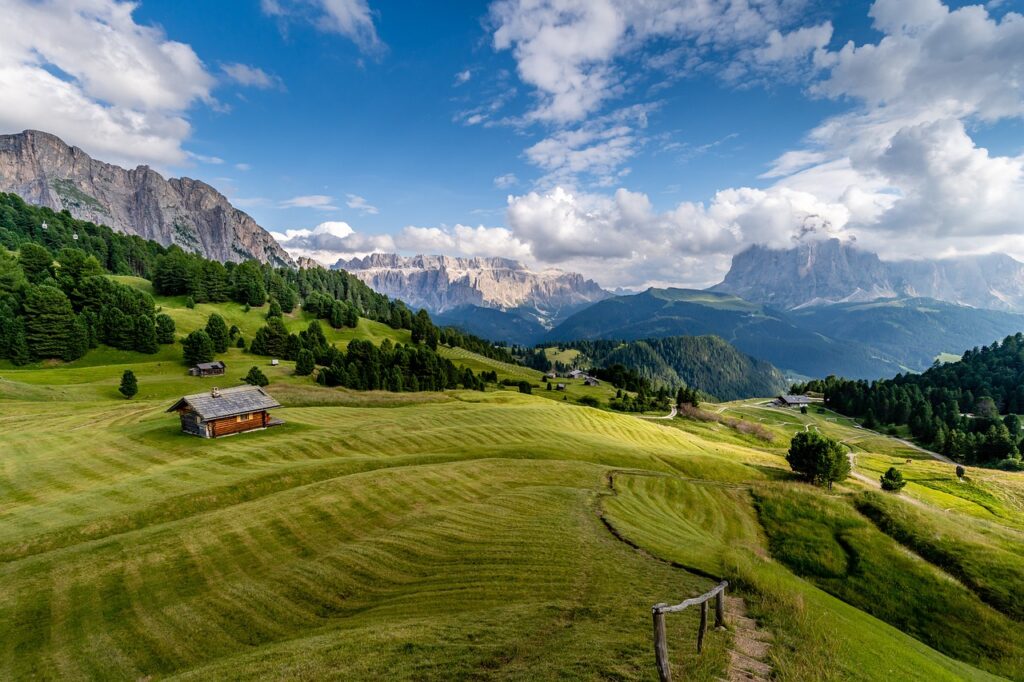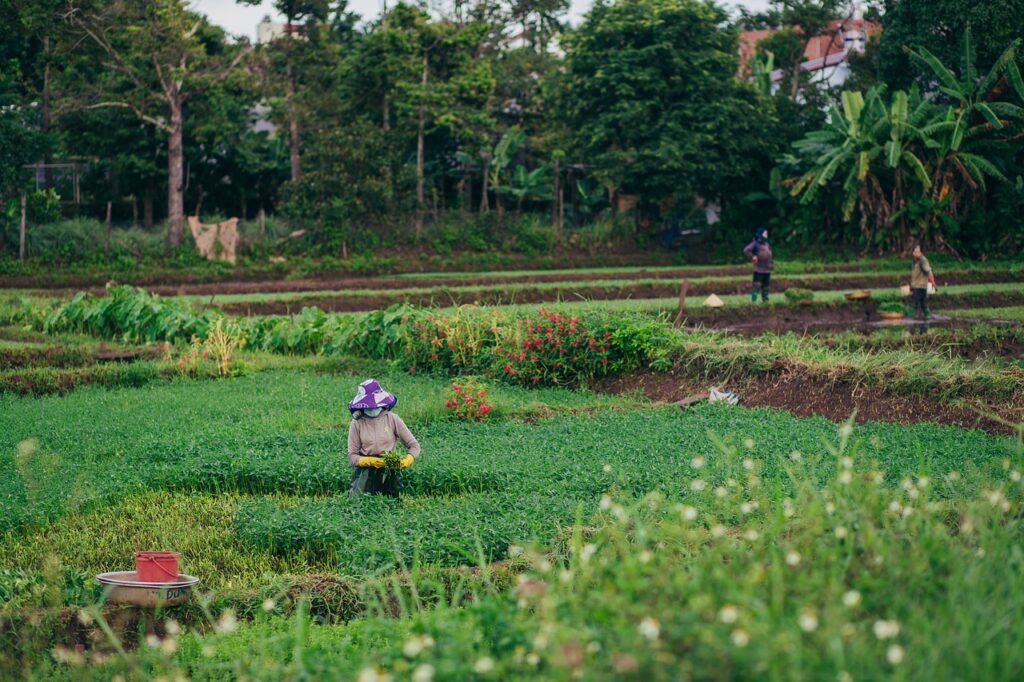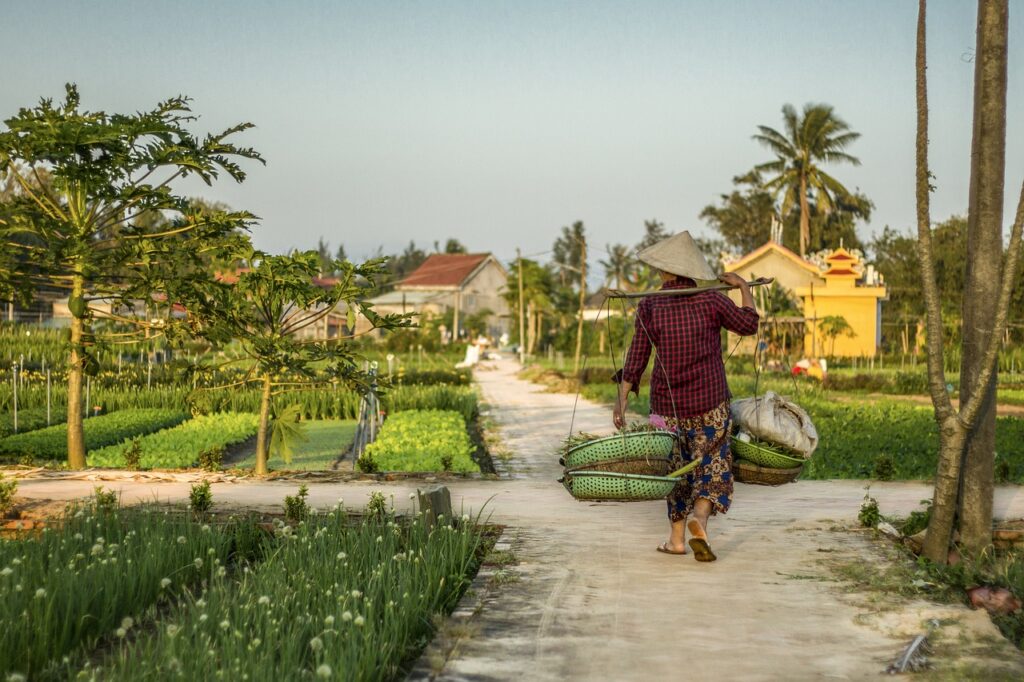In recent years, more individuals have turned to the tranquility and simplicity of village life, seeking an escape from the chaos of urban living. City life, often marked by noise, overcrowding, and stress, can overwhelm, leading many to yearn for a calmer environment.
 Pin
Pin Image by Julius Silver from Pixabay
Village life offers a unique charm through its serene landscapes and close-knit communities, where the pace of life is dictated by nature rather than the clock. Residents reconnect with the land, foster strong relationships with neighbors, and experience a warm sense of belonging, all while enjoying numerous benefits like lower living costs and access to green spaces.
This lifestyle promotes physical health through cleaner air and outdoor activities, while also enhancing mental well-being by reducing distractions and stress. As appreciation for these advantages grows, more people are drawn to village living.
Here are ten compelling reasons why village life can offer a superior quality of life compared to urban environments.
Table of Contents
1. Natural Environment
 Pin
Pin Image by WaterKing25 from Pixabay
Waking up to the soft hum of nature, where the first light of dawn spills over rolling hills and vibrant fields. Villages, often tucked away in serene corners of the world, are enveloped by breathtaking landscapes that captivate the senses. Towering trees stand sentinel, their leaves whispering secrets to the gentle breeze, while wildflowers dot the meadows, painting the ground in a kaleidoscope of colors. This lush greenery serves not only as a feast for the eyes but also as a balm for the soul.
The crystal-clear air, untainted by urban smog, fills lungs with each deep breath, invigorating the spirit. Birds serenade the day with cheerful melodies, adding a soundtrack to the picturesque scene. Streams babble over stones, while distant mountains loom, majestic and timeless, inviting exploration. Such an environment fosters a connection to the earth, grounding individuals and encouraging mindfulness.
Living in these natural surroundings promotes overall well-being—studies suggest that even a brief walk in nature can significantly reduce stress levels. Villagers experience the rhythm of the seasons, witnessing the beauty of blossoms in spring, the lush bounty of summer, the fiery hues of autumn, and the quiet stillness of winter. This cyclical theme of nature encourages a deeper appreciation for life’s simple pleasures, promoting a holistic lifestyle that nurtures both body and mind.
2. Lower Cost of Living
 Pin
Pin Image by 小平 郝 from Pixabay
The urban centers often inflate the price of living, villages stand out as havens of affordability. The cost of housing, groceries, and daily essentials in rural areas is typically much lower, allowing inhabitants to allocate their finances more freely. Picture a quaint cottage surrounded by sprawling gardens that require little maintenance—monthly rents that reflect the charm rather than exorbitant price tags that often accompany city life.
This financial reprieve translates into a more relaxed lifestyle. Families can enjoy home-cooked meals, fresh from local markets brimming with organic produce. The ability to save and invest in experiences rather than possessions fosters a sense of security and happiness, encouraging a communal spirit where neighbors support one another.
The slower pace of village life enables individuals to indulge in hobbies and personal interests, away from the constant hustle of urban existence. The freedom from financial strain allows for deeper connections, more laughter, and a life filled with joy rather than stress. In the embrace of nature and community, a fulfilling, accessible lifestyle awaits.
3. Less Pollution
 Pin
Pin Image by Chavdar Lungov from Pixabay
Villages boast a serene atmosphere largely untouched by the chaos of urban life. The crisp air, often perfumed by blooming wildflowers and rich vegetation, is a refreshing reminder of our connection to the earth. Unlike the bustling cities, where smog hangs heavy and the roar of traffic is a constant backdrop, village life offers a tranquil oasis. Here, the gentle rustle of leaves, the soft call of birds, and the distant sound of flowing streams create a natural symphony that calms the spirit.
This cleaner environment has profound implications for health and well-being. Studies reveal that lower levels of air pollution significantly reduce respiratory issues and other health problems. The decreased noise pollution, often a source of chronic stress for city dwellers, contributes to improved sleep quality and mental clarity. In the embrace of nature, villagers find not just fresh air, but also a lifestyle that nurtures their physical and mental health. The cumulative effect is a marked enhancement in quality of life, with villagers often experiencing different rhythms of existence—one that emphasizes peace, stability, and well-being.
4. Strong Community Bonds
 Pin
Pin Image by Henning Westerkamp from Pixabay
In villages, life tends to meander at a slower pace, allowing residents to forge deeper connections with one another. The village life is of trust, familiarity, and shared experiences. Neighbors become more than just faces; they evolve into an extended family. The warmth of daily greetings, the shared laughter over spontaneous gatherings, and the collective celebrations of life’s milestones cultivate a profound sense of belonging.
This close-knit community offers unparalleled emotional support. In times of need, villagers rally together—organizing help, sharing resources, or simply offering a listening ear. This blend of camaraderie fortifies social stability and creates a safety net that urban societies often lack due to their anonymity. The richness of these relationships fosters an environment where individuals feel valued and understood, significantly enhancing their overall emotional well-being. In essence, the sense of belonging in village life is not just comforting; it’s a crucial pillar of resilience and fulfillment that transforms daily existence into a tapestry of connected lives.
5. Slower Pace of Life
 Pin
Pin Image by Jupi Lu from Pixabay
In the gentle life of village, time seems to slow, inviting residents to savor each moment rather than rushing through the day. The hustle and bustle common in bustling cities fades away, replaced by serene mornings where the sun rises softly over dew-kissed fields and the air resonates with the soothing sounds of nature. Villagers awaken to birdsong rather than blaring horns, encouraging a sense of tranquility and mindfulness.
This slower pace fosters deep connections among community members. Conversations linger longer, laughter rings freely, and shared meals become cherished rituals. Without the clamoring demands of urban living, individuals can indulge in simple pleasures—strolling through sun-dappled streets, tending to their gardens, or sharing stories around a fire.
This leisurely lifestyle provides ample space for personal growth. Residents find time to reflect, to learn new skills, and to cultivate hobbies, promoting not just relaxation but also a profound sense of fulfillment. In the heart of the village, life unfolds like a beautiful tapestry, woven with moments of joy, introspection, and community bonds.
6. Healthier Lifestyle
 Pin
Pin Image by Sasin Tipchai from Pixabay
Village life inherently promotes a healthier lifestyle, offering the perfect antidote to the sedentary patterns often found in urban settings. Imagine waking up to a world where fresh, homegrown produce is abundant—ripe tomatoes, crisp greens, and juicy fruits are plentiful, picked straight from nearby gardens. This farm-to-table experience ensures that meals are not only nourishing but also vibrant with flavor, enhancing overall wellness.
Outdoor activities become an integral part of daily life, with scenic trails and open spaces beckoning residents to engage in physical activity. Whether it’s an invigorating hike through lush landscapes, cycling down winding paths, or simply tending to crops, the village encourages movement and connection with nature. This routine leads to improved physical fitness, fostering resilient bodies and alert minds.
The camaraderie among villagers often transforms work into something enjoyable rather than burdensome. Engaging in communal chores or seasonal festivals involving physical labor—like harvesting or planting—becomes an opportunity for socializing and strengthening community ties. The result? A harmonious blend of physical activity, nutritious food, and meaningful connections that collectively nurture an enduring sense of health and well-being among village residents.
7. Less Stress
 Pin
Pin Image from pixabay by canva
Waking up to the gentle sound of birds chirping, the soft rustle of leaves in the breeze, and the warm glow of the sun filtering through the window. This is the everyday reality in many villages, where the pace of life slows down and stress finds little room to take hold. In contrast to bustling urban settings filled with incessant noise and relentless deadlines, village life offers a peaceful retreat conducive to mental healing.
In these serene surroundings, distractions are minimal. Instead of the blaring sirens and honking horns of city streets, you’re surrounded by lush greenery and open skies. This tranquil environment invites individuals to breathe deeply and engage in mindfulness, prompting a focus on their mental health and overall well-being. A walk through the fields, a moment spent by the riverbank, or simply sitting under a towering tree can do wonders for one’s psyche. The absence of the daily grind allows time for reflection, leisure activities, and close-knit social interactions, all of which contribute to a profound sense of peace and reduced anxiety. In essence, village life nurtures the soul, providing a sanctuary where stress dissipates and calm prevails.
8. Cultural Heritage
 Pin
Pin Image by Dedy Eka Timbul Prayoga from Pixabay
Stepping into the village is like opening a timeworn book filled with tales of yesteryears. Villages often serve as living museums of cultural heritage, where age-old traditions and practices have been lovingly preserved. From vibrant festivals brimming with music and dance to artisanal crafts passed down through generations, each aspect of village life tells a story that connects the past to the present.
In these close-knit communities, a profound sense of identity thrives. People celebrate their roots through local customs, cuisines, and crafts that resonate with the essence of their ancestry. This connection fosters a deeper appreciation for their heritage, providing not just a sense of belonging but also a realization of their role in the continuum of history. Communities gather to share stories and rituals that bind them together, reinforcing the values and traditions that have shaped their lives.
As villagers partake in these cultural practices, they not only honor their forebears but also instill a sense of pride in the younger generations. The essence of village life is, therefore, a vibrant tapestry woven from threads of history, enriching the present with a profound sense of purpose and identity.
9. Safety and Security
In the countryside, life unfurls at a gentler pace, villages often boast remarkably low crime rates. This tranquil atmosphere cultivates a sense of safety that is increasingly rare in bustling urban centers. Families thrive in this secure environment, enjoying the freedom to let children roam and play, exploring their surroundings without the constant worry of lurking dangers. Neighbors foster strong connections, forming tight-knit communities where trust and camaraderie flourish. The reassuring presence of familiar faces adds to the comfort of daily life, as individuals come together to watch over one another. This profound sense of security not only alleviates anxiety but also promotes a peaceful mindset, allowing for a worry-free lifestyle. Here, laughter resonates in the air, and the simple acts of gathering for festivities or leisurely strolls create shared moments of joy, reinforcing the village’s role as a sanctuary of safety.
10. Opportunities for Self-Sufficiency
 Pin
Pin Image by Hong DUONG from Pixabay
Life in a village brims with opportunities for self-sufficiency, encouraging residents to tap into their roots and cultivate unique skills. Farming becomes a way of life, with families growing their own food, embracing the rhythms of nature, and enjoying the fruits of their labor. Beyond agriculture, crafting emerges as a cherished tradition, where artisans create handmade goods, from pottery to textiles, infusing their creations with personal stories and local heritage. This creativity not only nurtures individual talents but also fosters a sense of pride within the community.
Local businesses thrive, offering goods and services that are often rooted in the distinctive character of the village. This independence reinforces the local economy, creating a cycle of support that strengthens connections among residents. In embracing self-sufficiency, villagers carve out fulfilling lives rich in purpose and creativity, transforming everyday tasks into opportunities for innovation and expression. Here, the spirit of collaboration shines, as each person’s effort contributes to the broader tapestry of village life.
City life has its perks, village life offers numerous benefits that enhance overall quality of life. From a deeper connection with nature to stronger community ties, it’s clear that living in a village can be a rewarding experience.































